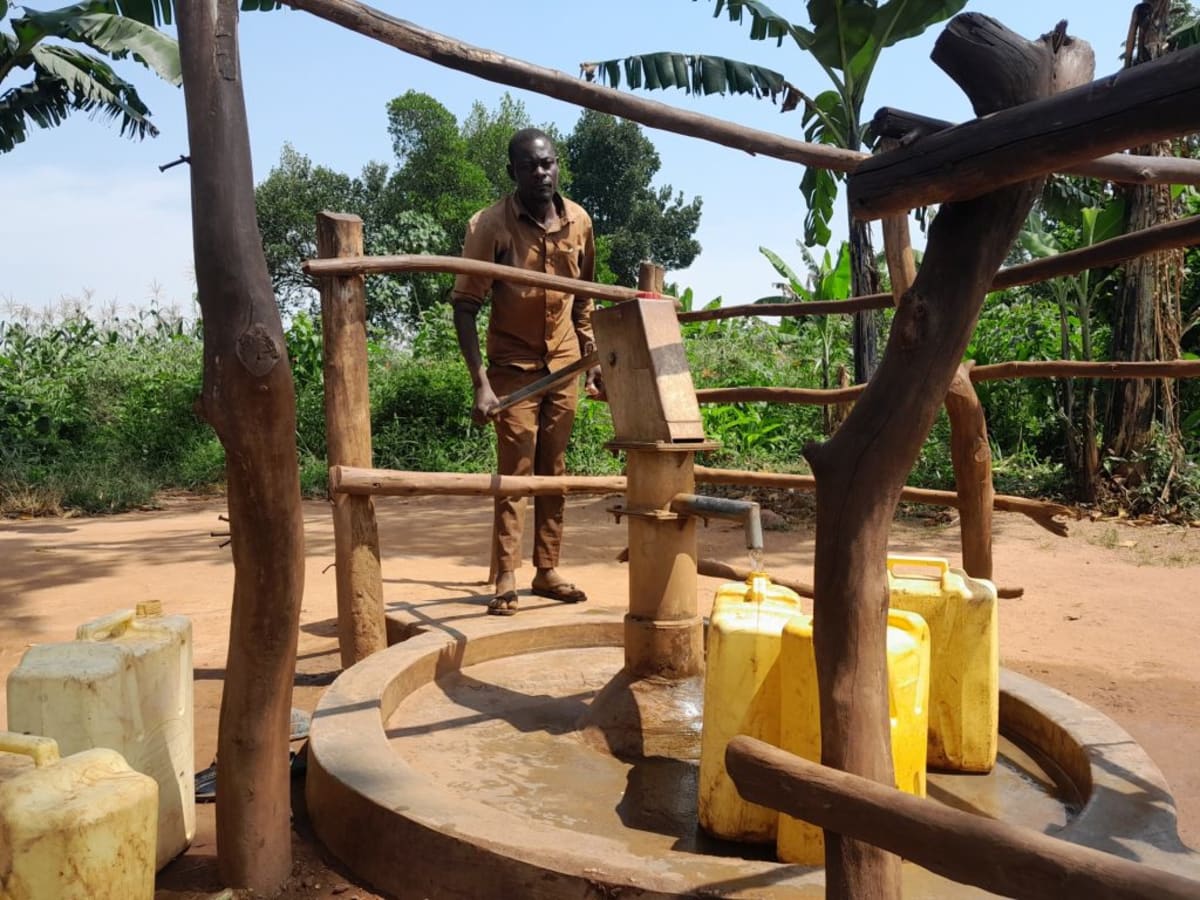The 450 people who live in Miramura are in need of a source of sufficient, clean water. Currently, they rely on what they can collect from a small local swamp—when it's not dry.
Alternative water sources are very far away, so people must use bicycles or motorcycles if they are fortunate enough to own them. Yet community members must travel a busy road to get there, the waterpoints are always overcrowded, and they must buy the water with money they cannot afford to lose.
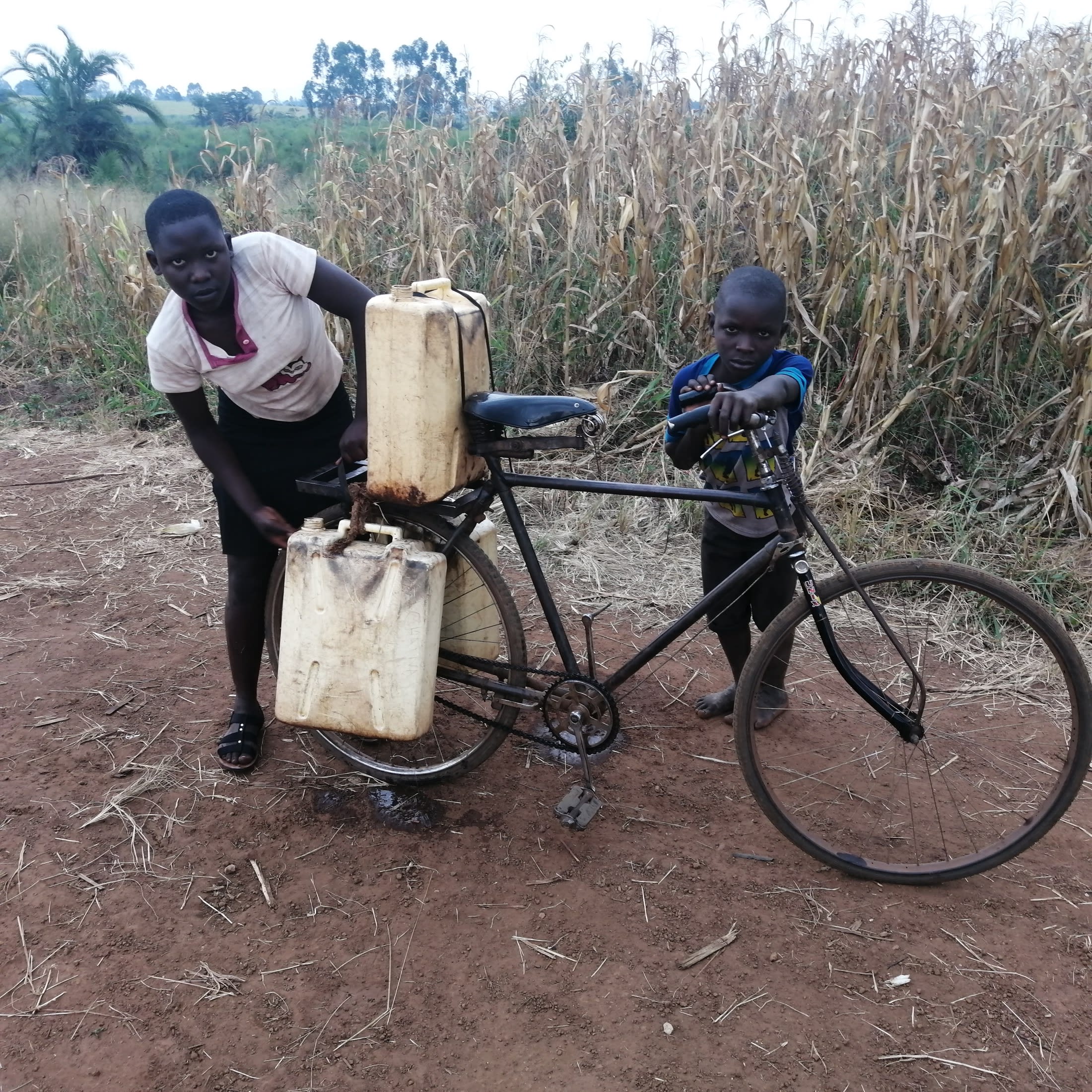
The long trek to the swamp is tiring enough, but collecting water is a labor-intensive process that includes stepping through mud into the water and scooping it into their containers.
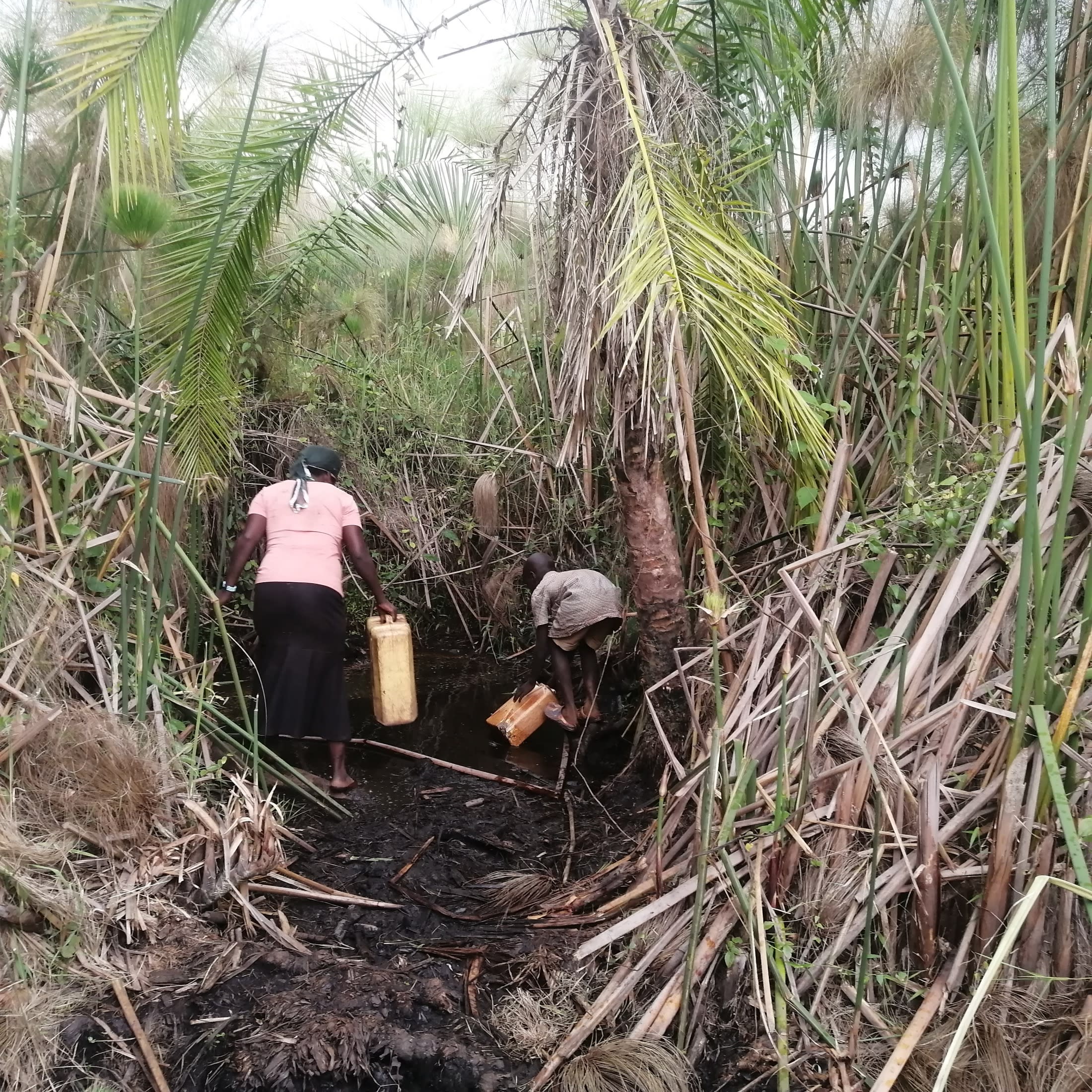
Sadly, this same water is where children sometimes defecate, and other environmental contaminants breed. Drinking contaminated water puts everyone at risk of serious health consequences.
"Our primary water source is contaminated. [The] water is colored and with a bad smell," said Evas Katusabe, a mother of six children shown carrying water below.
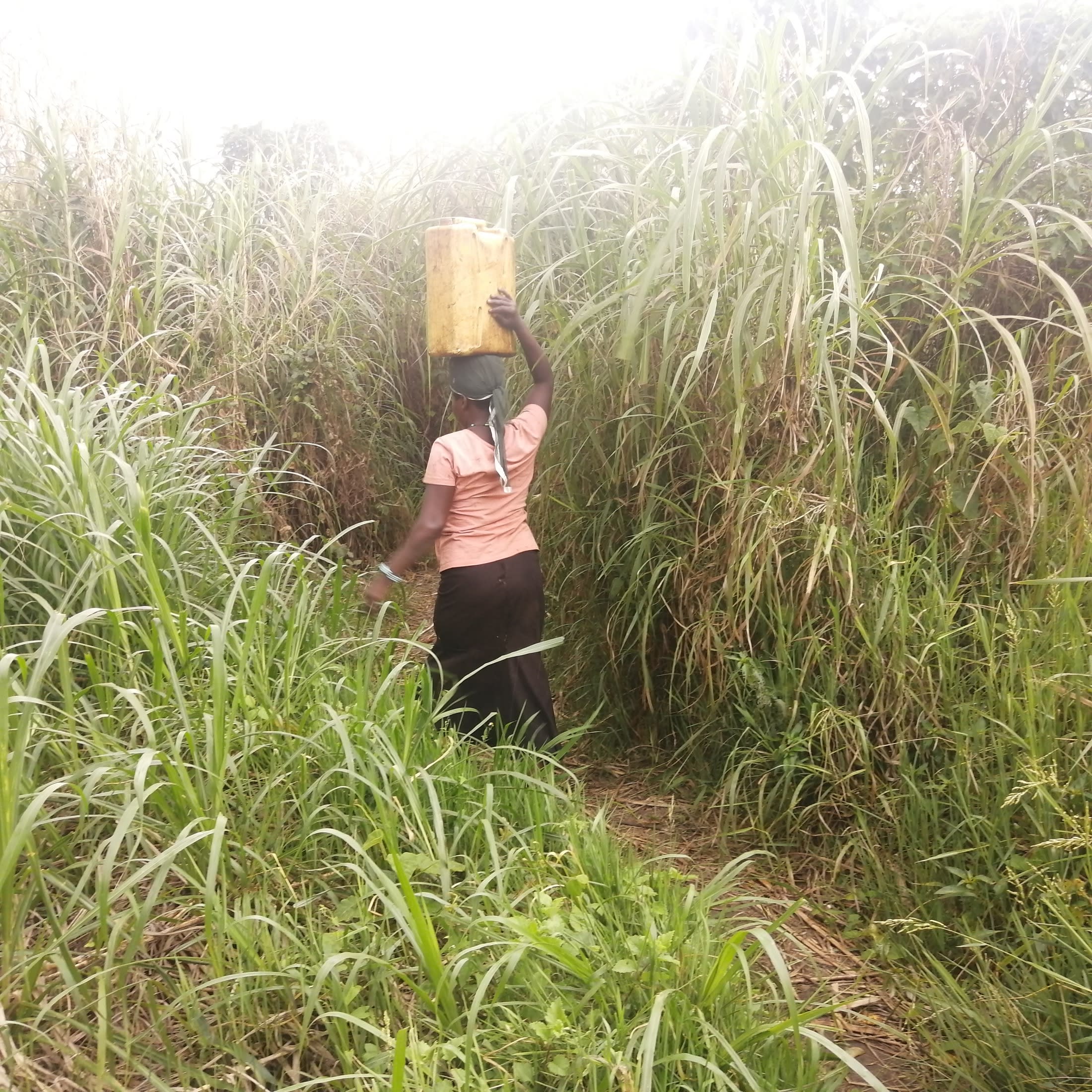
"I use this water for cooking because we have no alternative. When we use it for bathing, it causes itching on the skin. My children always suffer from water-related diseases like typhoid and skin rashes."
Evas' eleven-year-old son suffered from typhoid, and her three-year-old daughter has skin rashes, causing them to spend a lot of time at the far-away health center in Bwijanga.
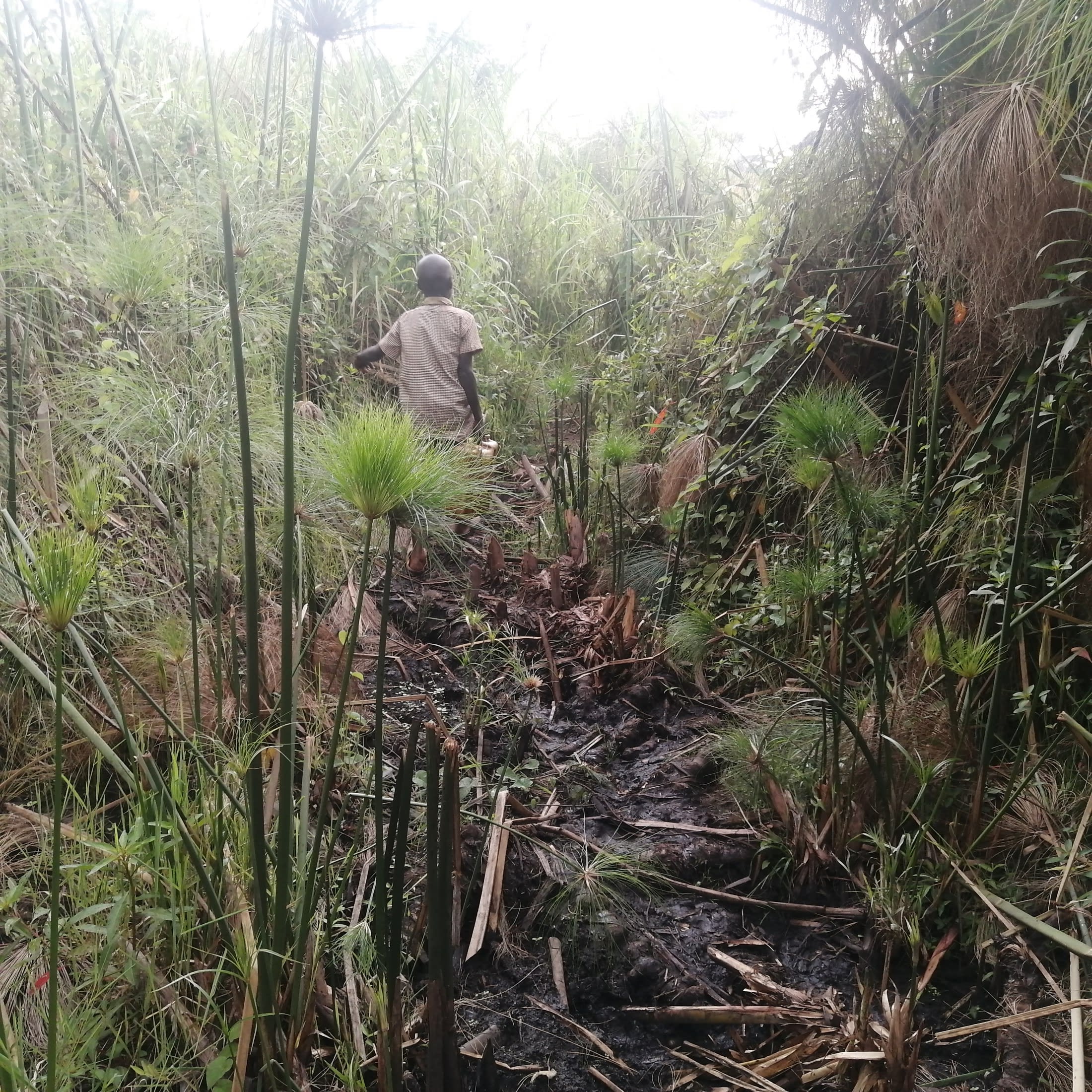
"I once fell sick because of using this water," said Hakim, a young boy from the community (shown above fetching water). "I got stomach upsets that led to diarrhea. My parents spent a lot of money on treating me, yet this money was supposed to cater for my school fees."
Like Evas' children, he has also suffered from a rash that he can't stop itching. Inevitably, the rash evolves into sores that, along with the incessant itching, prevent him from attending school.
The people in this community need their own reliable, safe water source that will allow them to maintain their incomes and health so there can hopefully be brighter days ahead.
Here’s what we’re going to do about it:
New Borehole
This new borehole is an exciting opportunity for this community! We work with the community to determine the best possible sites for this well.
We conducted a hydrogeological survey and the results indicated the water table is an ideal candidate for a borehole well. Due to a borehole well's unique ability to tap into a safe, year-round water column, it will be poised to serve all of the water needs for this community, even through the dry months.
Community members will help collect the needed construction materials such as sand, rocks, and water for mixing cement. They will also provide housing and meals for the work team, in addition to providing local laborers. We will complement their materials by providing an expert team of artisans and drilling professionals, tools, hardware, and the hand-pump. Once finished, water from the well will then be used by community members for drinking, handwashing, cooking, cleaning, and much more.
Training
Training’s main objectives are the use of latrines and observing proper hygiene practices since these goals are inherently connected to the provision of clean water. Open defecation, water storage in unclean containers and the absence of hand-washing are all possible contaminants of a household water supply. Each participating village must achieve Open Defecation Free status (defined by one latrine per household) prior to the pump installation for this borehole well.
This social program includes the assignment of one Community Development Officer (CDO) to each village. The CDO encourages each household to build an ideal homestead that includes: a latrine, a handwashing facility, a separate structure for animals, a rubbish pit and a drying rack for dishes.
We also implement the Community-Led Total Sanitation (CLTS) approach with each of our village partners. This aims to improve the sanitation and hygiene practices and behaviors of a village. During these sessions, village leaders naturally emerge and push the community to realize that the current practices of individual households – particularly the practice of open defecation – are not only unhealthy, but affect the entire village. CLTS facilitates a process in which community members realize the negative consequences of their current water, sanitation and hygiene behaviors and are inspired to take action. Group interactions are frequent motivators for individual households to build latrines, use them, and demand that other households do the same.
Improved Sanitation
The aim is that all households own an improved latrine. Many households do not use a latrine but use the bush. Due to open defecation, feces are spread all over the village. This leads to waterborne diseases and contamination of groundwater and surface water. Our aim is that the community is able to live a healthy life free of preventable diseases. We endeavor that at the end of our presence in the community, people will have both access to sustainable, clean water and access to sanitation. We have now organized families to form digging groups for latrine construction, and empowered them with tools to use.

 Borehole Well and Hand Pump
Borehole Well and Hand Pump
 Rehabilitation Project
Rehabilitation Project























